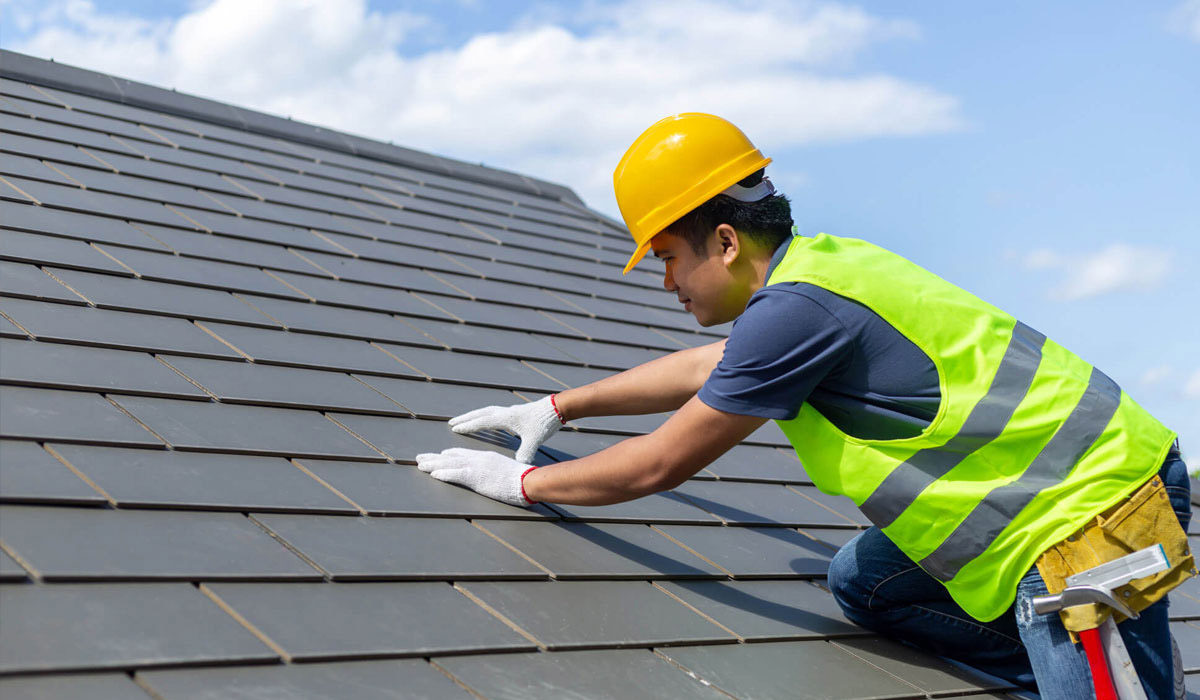As a homeowner, you’re always making decisions that affect your comfort, finances, and the long-term value of your property. Whether it’s upgrading appliances, sealing drafty windows, or installing better insulation, improving home energy efficiency is often high on the priority list. But one area that’s frequently overlooked is your roof.
A roof isn’t just your home’s protective shell. It’s also a major factor in how well your home retains heat in the winter and stays cool in the summer. If your roof is damaged, aging, or poorly insulated, it can undermine everything else you’ve done to reduce energy usage. That means higher heating and cooling costs, uncomfortable indoor temperatures, and more strain on your HVAC system.
If you’ve noticed a spike in your energy bills, it might not be your windows or thermostat to blame—it could be time to look up. Let’s explore how a compromised roof impacts energy efficiency and what you can do to fix it.
The Roof’s Role in Your Home’s Energy System
Your roof plays a major role in regulating indoor temperatures. Alongside home insulation, it forms a thermal barrier between your living space and the outdoors. In colder months, a well-sealed, well-insulated roof helps keep warm air from escaping. In the summer, it blocks excess heat from entering and helps maintain a cool indoor climate.
When your roof is in poor condition—missing shingles, sagging areas, leaks, or inadequate ventilation—it breaks that barrier. Warm air seeps out in the winter, and hot air rushes in during the summer. Your HVAC system is then forced to work harder to maintain a consistent temperature, and your energy usage spikes as a result.
In other words, a damaged or outdated roof can quietly drain your wallet every single month.
Warning Signs That Your Roof May Be Hurting Energy Efficiency
There are a few signs that your roof might be the hidden cause of your energy troubles. For example, if you’re noticing unusually high energy bills or inconsistent temperatures between rooms, your attic and roof system may not be doing their job.
If your attic feels excessively hot in the summer or icy cold in the winter, that’s a good indication that insulation is lacking or air is leaking in from damaged areas of the roof. Water stains on ceilings or walls may suggest moisture intrusion due to broken shingles or cracked flashing, which can also compromise insulation materials.
Old roofing materials that have lost their protective coating can absorb rather than reflect heat, raising the temperature in your attic and making your home feel warmer overall. And as insulation deteriorates from exposure to moisture or pests (yes, damaged roofs can let them in too), it loses its ability to regulate temperature efficiently.
Roof Repair vs. Roof Replacement for Home Energy Efficiency
If your roof has minor issues, like a few missing shingles, loose flashing, or localized damage, a timely roof repair can go a long way in restoring energy efficiency. Sealing gaps, reinforcing insulation, and correcting problem areas can stop air leaks and reduce energy waste.
However, if your roof is nearing the end of its lifespan or showing widespread deterioration, a full roof replacement may be the smarter investment. New roofing systems are designed with energy efficiency in mind. Materials like cool roofing shingles reflect sunlight, reduce heat absorption, and maintain a more stable attic temperature throughout the year.
During a replacement, you’ll also have the opportunity to improve ventilation and add better insulation. These upgrades work together to create a more balanced indoor climate, lowering your energy usage and giving your HVAC system a much-needed break.
Choosing the Right Roofing Material Matters
Not all roofs are created equal when it comes to energy performance. If you’re replacing your roof and want to maximize energy savings, it’s important to select materials that offer durability and thermal protection.
Look for roofing products that are rated for energy efficiency and designed to perform well in your climate. For example, reflective shingles are great in hot climates, as they reduce the amount of heat absorbed by the roof. In colder areas, insulated metal roofing or asphalt shingles paired with proper underlayment can help retain interior warmth.
Modern roofing systems are also built to resist common threats that degrade efficiency, such as moisture intrusion, wind uplift, and UV damage. The best materials won’t crack, swell, or fade over time—and they’re often resistant to insects and rot, too.
By choosing materials that are both energy-efficient and low-maintenance, you’re making a smart investment in both comfort and long-term savings.
Long-Term Benefits of an Energy-Efficient Roof
A high-performing roof not only lowers your energy bills, but also increases your overall comfort, improves indoor air quality, and extends the life of your HVAC system. You’ll experience fewer temperature swings throughout the day, enjoy cleaner air due to better ventilation, and reduce your carbon footprint in the process.
Plus, an energy-efficient roof adds value to your home. Buyers are becoming more energy-conscious, and features like upgraded roofing, modern insulation, and reduced utility costs can make your home stand out in a competitive market.
Don’t Let a Bad Roof Drain Your Energy—and Your Wallet
Energy efficiency isn’t just about smart thermostats and sealed windows. Your roof is one of the most critical components of your home’s overall efficiency system. If it’s damaged, aging, or poorly insulated, it’s likely costing you more than you think in energy dollars.
If you suspect your roof might be contributing to expensive energy bills, the best next step is to schedule a professional inspection. A roofing expert can evaluate your current system, identify problem areas, and help you determine whether a roof repair or full roof replacement is the right move.
A new roof that’s designed for performance won’t just keep the rain out—it’ll keep energy in. And that’s a win for your home, your budget, and the environment.


